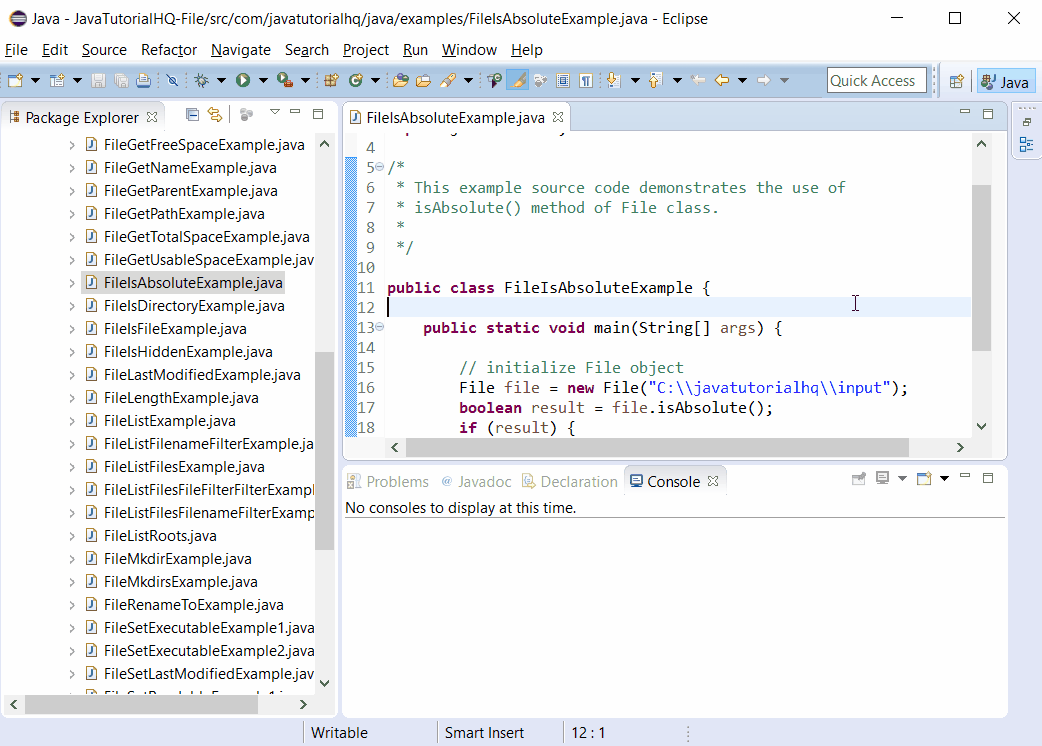java.io.File isAbsolute()
Description
Method Syntax
public boolean isAbsolute()
Method Argument
| Data Type | Parameter | Description |
|---|---|---|
| N/A | N/A | N/A |
Method Returns
This method returns a boolean, true if this abstract pathname is absolute, false otherwise.
Compatibility
Requires Java 1.0 and up
Java File isAbsolute() Example
Below is a java code demonstrates the use of isAbsolute() method of File class. The example presented might be simple however it shows the behaviour of the isAbsolute() method of File class. Basically just make use of the boolean result to print messages if the file specified as method argument is absolute or not.
package com.javatutorialhq.java.examples;
import java.io.File;
/*
* This example source code demonstrates the use of
* isAbsolute() method of File class.
*
*/
public class FileIsAbsoluteExample {
public static void main(String[] args) {
// initialize File object
File file = new File("C:javatutorialhqinput");
boolean result = file.isAbsolute();
if (result) {
System.out.println("File specified is absolute pathname");
}
}
}

